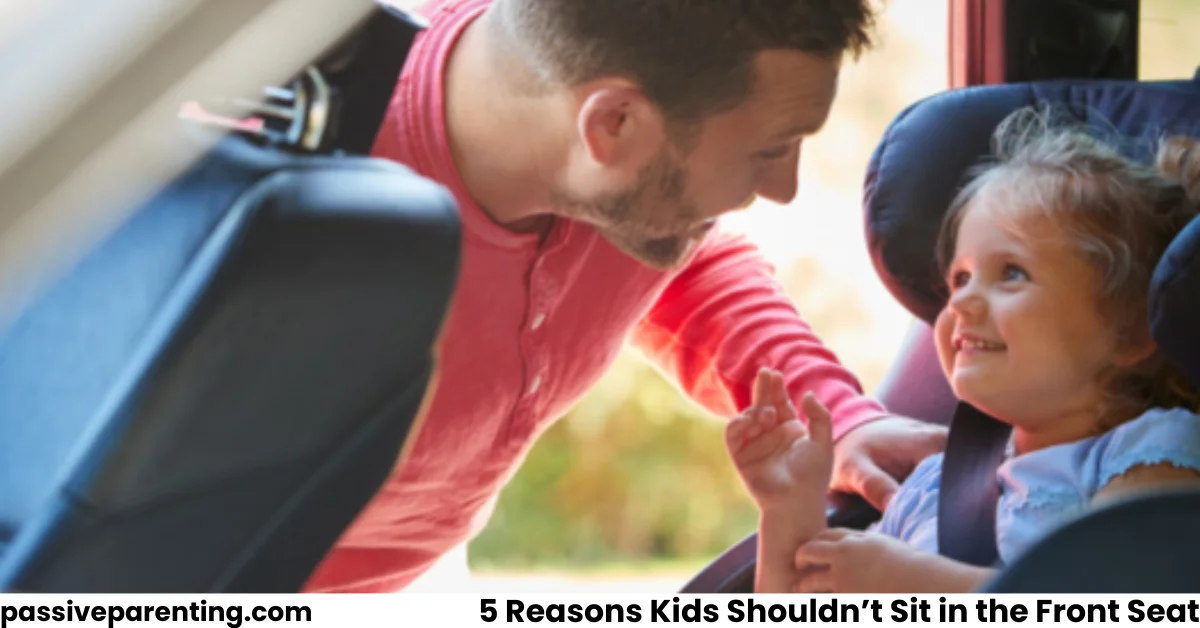Keeping our children safe is our top priority as parents, and this includes car travel safety. The main aspect of keeping the children safe in cars is ensuring that they are securely seated in their designated seats.
Maryland is a state with a rich history and vibrant communities, and like most states in the U.S., it is very proactive when it comes to road safety. The state has various urban, suburban, and rural neighborhoods, and vehicle safety is essential for all its residents. Among the many safety rules the state is strict about, child safety is also included.
The rules include the legal age to sit in the front seat in Maryland, which is 13 years. However, children who are 8 years old or over 4 feet 9 inches can sit in the back seat without a booster seat.
Let’s look into why it’s best to keep your children out of the front seat till they meet the government-required age.
Reason 1: Airbag Danger
It is important to understand that car safety features, especially the airbag feature, were designed keeping adults in mind. These airbags often deploy with great force in case of a crash to protect the adult passenger. However, the same safety feature can become a hazard to a child.
Children are much smaller and lighter compared to an adult, so the force of an airbag could lead to serious facial, chest, and upper body injuries. The risk of injuries increases among younger children as well as those who are not properly restrained.
Reason 2: Proximity to Impact Zones
Being seated on the front seat means that children are closer to impact zones like the car’s dashboard and windshield. In case of a crash, children are likely to get hurt due to colliding with these hard surfaces.
Additionally, the front of the car is among the more common points of impact in a collision, so in case of accidents like head-on collisions or even T-bone accidents, children could be at greater risk of severe injuries.
Reason 3: Seatbelt Safety and Fit
Another safety feature that was designed keeping adults in mind is seatbelts. The standard seatbelt in the front seat does not fit children correctly, therefore reducing the effectiveness of the feature. A normal seatbelt might sit too high on a child’s neck or stomach, increasing the chances of injury.
Child safety seats and booster seats are made specifically to accommodate children, so the seatbelts fit them properly and keep them safe. These seats are best used in the back seat, where safety features and proper restraint systems are more effective, providing children with a safer ride.
Reason 4: Distraction for the Driver
When a child is sitting in the front seat, they are likely to fiddle with the car features or do other things that may distract the driver. Diverting your attention from the road to the child increases the chances of accidents. Keeping the children in the backseat allows the driver to drive without distractions, contributing to overall road safety.
Reason 5: Legal and Safety Guidelines
Just like state laws, there are also federal laws in place that require children under 12 to be seated in the back with an appropriate seat setting. These laws are in place to ensure the safety of young passengers. Following these regulations helps ensure children are protected to the greatest extent possible while traveling in vehicles.
Key Takeaways
- The state of Maryland mandates that children under the age of 13 cannot sit in the front seat, while children 8 years and older or over 4 feet 9 inches tall can sit in the back seat without booster seats.
- Front airbags are designed for adults, so they will not be able to properly protect children; in fact, they might cause more harm.
- The front seat puts children closer to impact areas like the windshield and dashboard.
- Seatbelts are also designed keeping adults in mind; an ill-fitted seatbelt could seriously injure a child.
- Children in the front seat can be a distraction for the driver. To minimize distractions and the possibility of an accident, it is best to seat children in the back seat with age-appropriate seating.
- There are federal laws in place that require children under 13 to be seated in the back with age-appropriate safety features.




